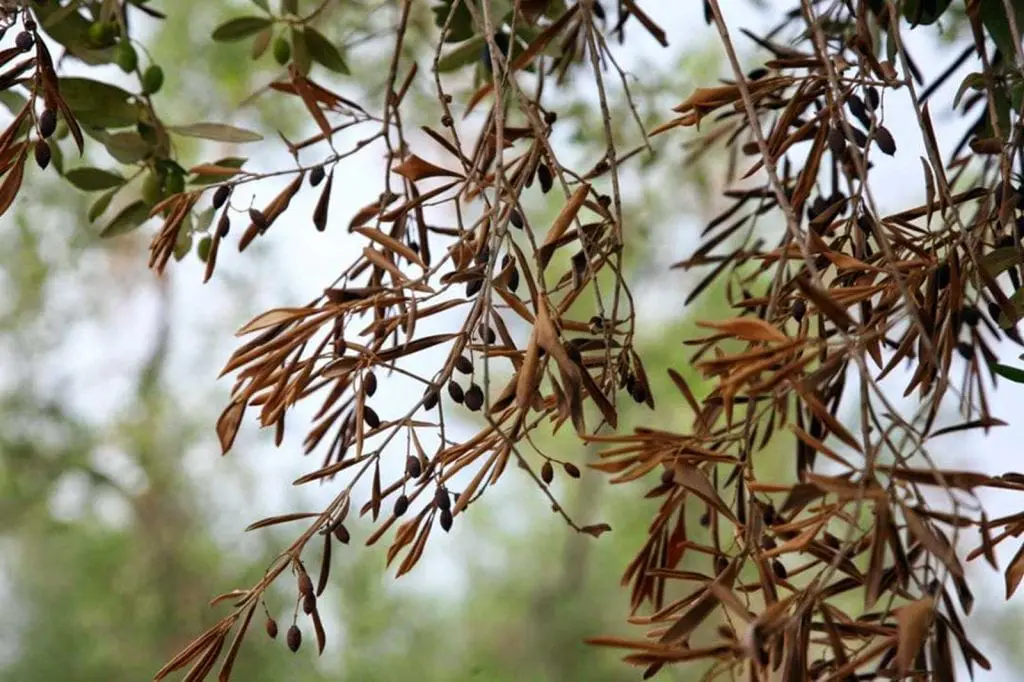There are a number of pests and diseases that attack plants, but few have become as well known in such a short time as Xylella fastidiosa . This bacterium, native to California, affects several species of important economic interest, such as olive or almond trees, so many farmers are doing everything possible to protect their crops.
In Jardinería On and in order to deactivate the alarm that has been created, we are going to explain everything you need to know about this bacterium.
Index
- 1 What is it?
- 2 How is it spread?
- 3 What are the symptoms?
- 4 What plants does it affect?
- 5 What measures have been taken to prevent the spread?
- 6 What are the responses of farmers and environmentalists?
- 7 What can you do to prevent it from spreading?
What is?

Olive trees, one of the affected species.
Xylella fastidiosa is a bacterium of the Proteobacteria class native to Northern California . In 2013 it was detected in an olive grove in southern Italy, where just 2 years later it would end up affecting millions of olive trees. But it did not stop there, but at the end of 2016 it was detected in Spain, specifically in the Balearic Islands, from where biologists criticize the lack of control in the import and export of vegetables.
At the end of June 2017, it was detected for the first time in the Iberian Peninsula, in Guadalest (Alicante). And in April 2018 the first case was detected in Madrid, specifically in Villarejo.
At the moment no cure has been found .
How is it spread?
This microorganism is transmitted through vector insects that feed on plant sap , such as cercopids (they look like small cicadas), especially in spring and summer, when temperatures are between 26 and 28ºC maximum. Once the vector bites an infected plant, the bacteria will remain in the insect’s feeding structures, which will transmit it to the next plant it bites.
What are the symptoms?

Image – University of Florida: IFAS UF School of Forest Resources & Conservation
The symptoms can vary from one species to another, but in general we have to worry if we see:
- leaf wilt
- The plant looks like decayed, sad
- Drying of leaves and branches
- Chlorosis
- spotted on leaves
What plants does it affect?
X. fastidiosa has more than 100 different host plants, with woody plants being the main affected crops , such as avocado , citrus, almond , peach, grapevine, oleander , oak , elm , maple , or sweetgum .
What measures have been taken to prevent the spread?

Image – Agropopular.com
Some that farmers and environmentalists are not liking either. On the one hand, not only the affected plants are being eliminated, but also those that are hosts of the bacteria within a radius of 100 meters . In addition, color traps have been placed in order to control and eliminate vector insects within a radius of 500 meters.
On the other hand, the Balearic Islands Ministry of the Environment has decided to ban the export of a series of plant species.
What are the responses of farmers and environmentalists?
When a pest like this spreads, sometimes farmers and environmentalists do not go hand in hand, something that is completely natural. The former obviously have a business and want to make money out of it; environmentalists expect the environment to be cared for. But in the case of Xylella, both have a common goal: to eradicate this disease so that both crops and nature can be restored, albeit slowly.
Therefore, they urge that everything possible be done to put an end to this problem , which is killing hundreds of thousands of trees. Without going too far back, in March 2018, 627 outbreaks of olive tree Ebola were detected in the Balearic Islands ; a month later all the trees had been felled.
In the case of Madrid, not only the affected trees were uprooted, but also those located within a radius of 100 metres. These are all losses both to those who grow them and to the environment. Therefore, it is urgent to find truly effective measures to eliminate Xylella fastidiosa .
What can you do to prevent it from spreading?
The reality is that individuals cannot do much, since they are the ones in charge of ordering plants from nurseries who must comply with the law and strictly follow what is indicated. But for example, and as we have seen a little above, in the Balearic Islands we are prohibited from sending certain plants , whether we are private individuals or not.
In addition, in the event that we suspect that a specific plant could have olive Ebola, it will be important to contact the plant health department that corresponds to our locality.
Finally, we have to buy healthy specimens . If they have yellow leaves before their time (for example, if it is a deciduous tree that loses its leaves in spring), the trunk looks bad, or it has pests, we will not buy it.

